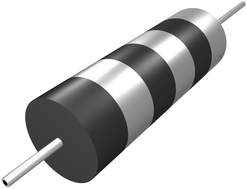Ring magnets for magnetic beads trapping in a capillary†
Abstract
This paper introduces the concept of ring magnets for magnetic beads (MBs) trapping in a capillary. Such magnets enable an easy

* Corresponding authors
a
Ecole Polytechnique Fédérale de Lausanne, Laboratoire d'Electrochimie Physique et Analytique, EPFL SB ISIC LEPA, Station 6, Lausanne, Switzerland
E-mail:
hubert.girault@epfl.ch
Fax: +41 21 6933667
Tel: +41 21 6933145
b Laboratoire LJK, groupe EDP, Université Joseph Fourier, 51 rue des Mathématiques, Grenoble, France
This paper introduces the concept of ring magnets for magnetic beads (MBs) trapping in a capillary. Such magnets enable an easy

 Please wait while we load your content...
Something went wrong. Try again?
Please wait while we load your content...
Something went wrong. Try again?
A. Gassner, J. Morandini, J. Josserand and H. H. Girault, Anal. Methods, 2011, 3, 614 DOI: 10.1039/C0AY00596G
To request permission to reproduce material from this article, please go to the Copyright Clearance Center request page.
If you are an author contributing to an RSC publication, you do not need to request permission provided correct acknowledgement is given.
If you are the author of this article, you do not need to request permission to reproduce figures and diagrams provided correct acknowledgement is given. If you want to reproduce the whole article in a third-party publication (excluding your thesis/dissertation for which permission is not required) please go to the Copyright Clearance Center request page.
Read more about how to correctly acknowledge RSC content.
 Fetching data from CrossRef.
Fetching data from CrossRef.
This may take some time to load.
Loading related content
